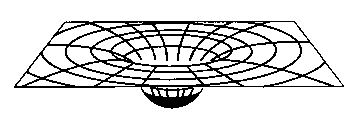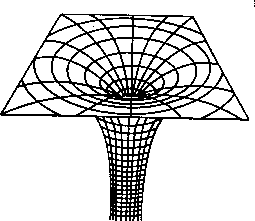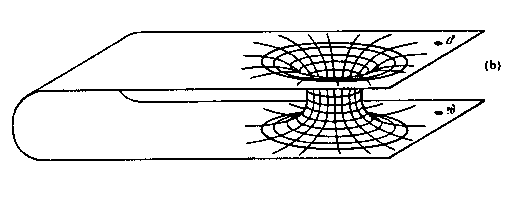What's So Important About Black Holes?
What exactly goes on in a black hole is a mystery to scientists, since A) we really don't know for a fact that they exist, B) if they did in fact exist, it would be hard to get anywhere close enough to one to study it well enough. The most popular theory today is that black holes are simply tiny balls of supercondensed matter, and anything that gets sucked into it will be crushed to molecular size levels and simply added to the black hole's mass. The fun stuff is in the theories that are a bit more... out there.
More radical theories include possible tears in space that lead to alternate dimesions, or Einstein's theory of relativity comes into play and things that enter a black hole's gravity field could be sent racing through time. Take for instance the two images below. The first is a two-dimensional representation of the gravity of a normal star. Imagine any object floating through space as a marble. Said marble rolling along the flat surface of the space will roll into the indentation made by the sun's gravity. If you flick the marble hard enough, it can roll out of the indentation and roll away. The second pic is a representation of the gravity made by a black hole. Notice that if the marble rolls into the hole, there's no way it can get out, since there is no end to the hole.
Images Courtesy of David M. Harrison
Below is a theory about how a black hole could work: the black hole is connected to a "white hole" that repels objects rather than suck them in. The white hole could be located light years away from the black hole, or could lead to a white hole in a completely different dimension.
Image Courtesy of David M. Harrison
Such prospects are intriguing, and provide science fiction novelists with endless material for their writings. None of these theories have been proved, and since we can't get close enough to a black hole to study one, they're all perfectly valid. Perhaps one day mankind will discover the truths behind black holes.
Here's looking to the stars...


